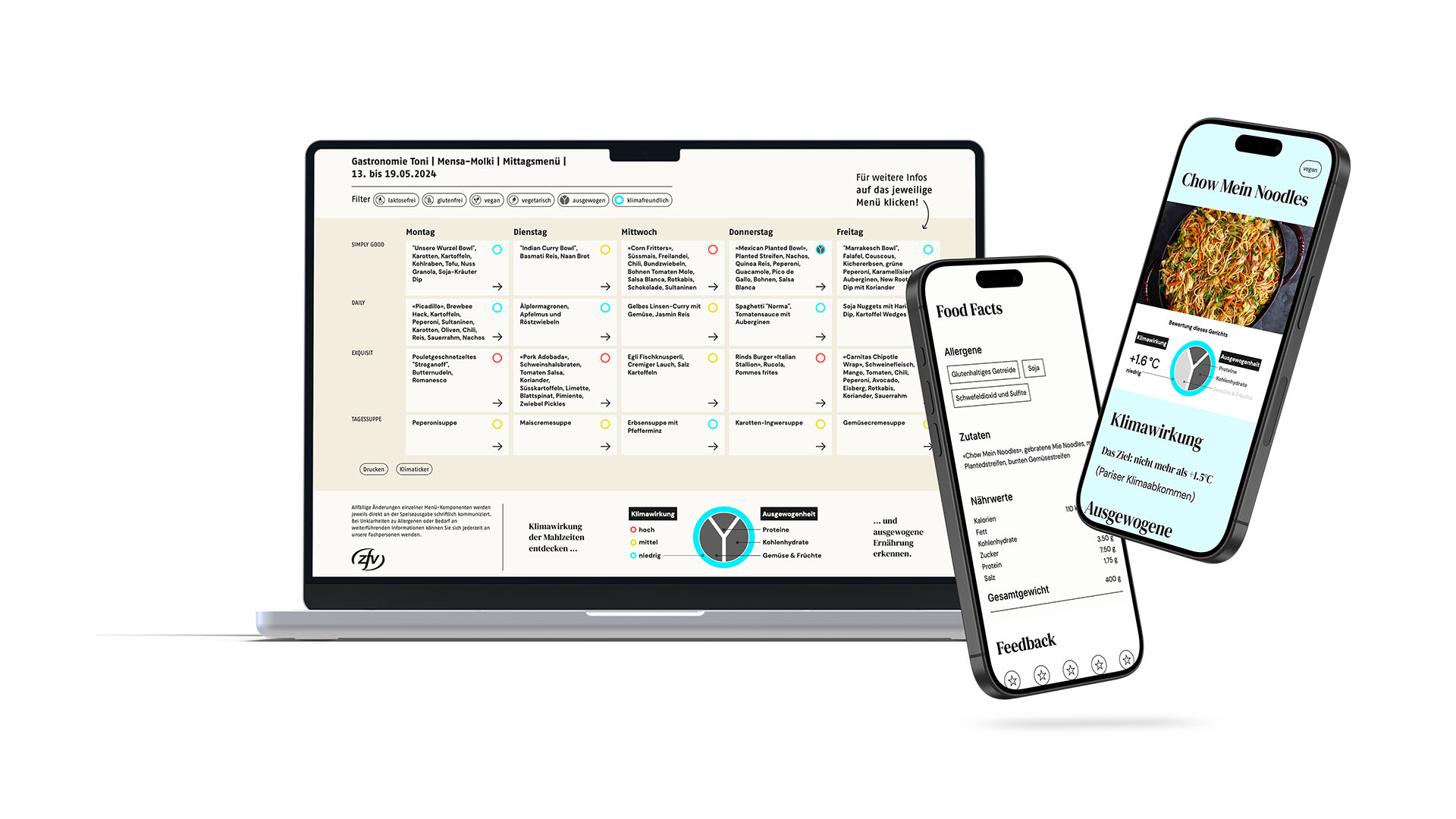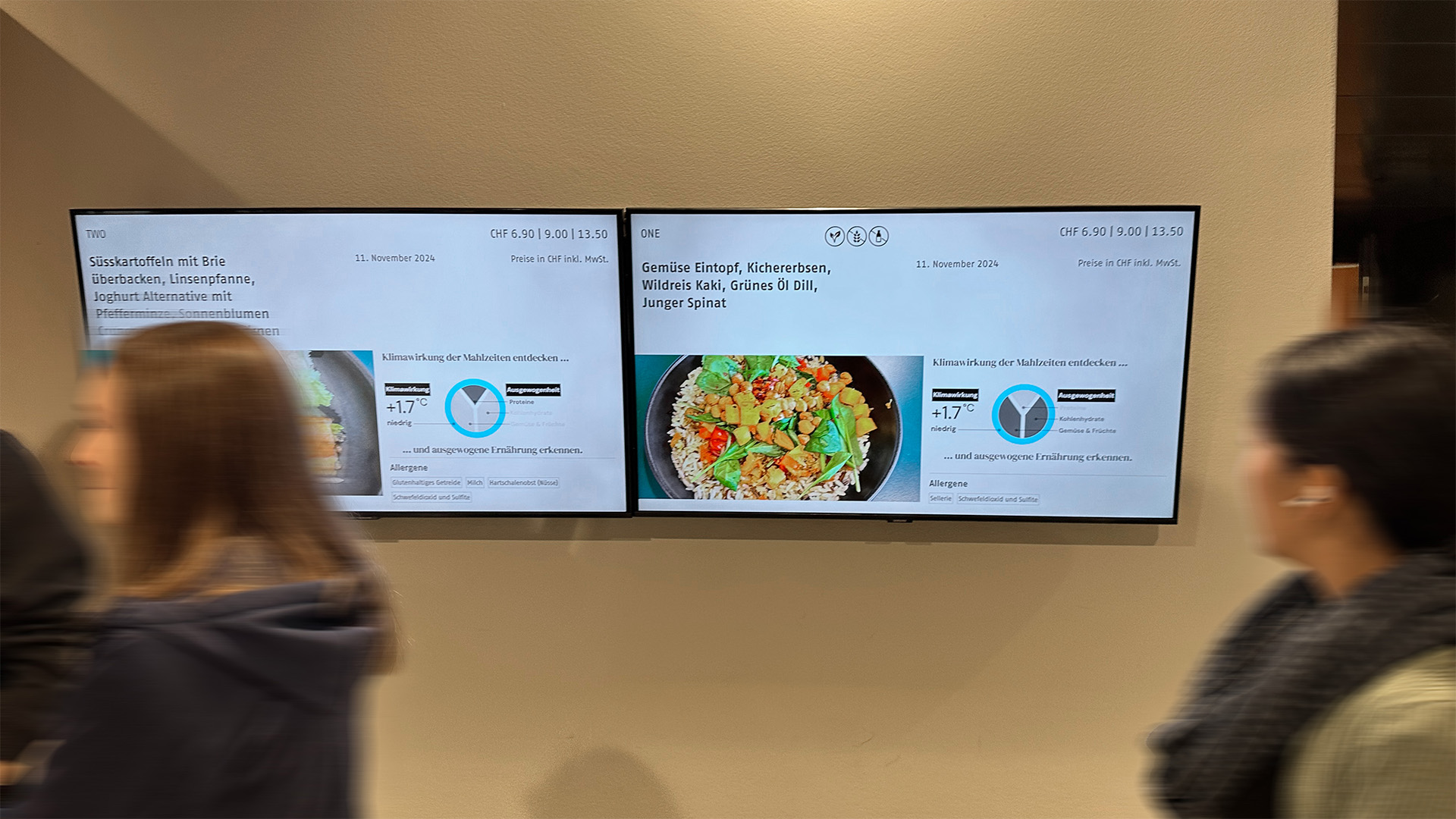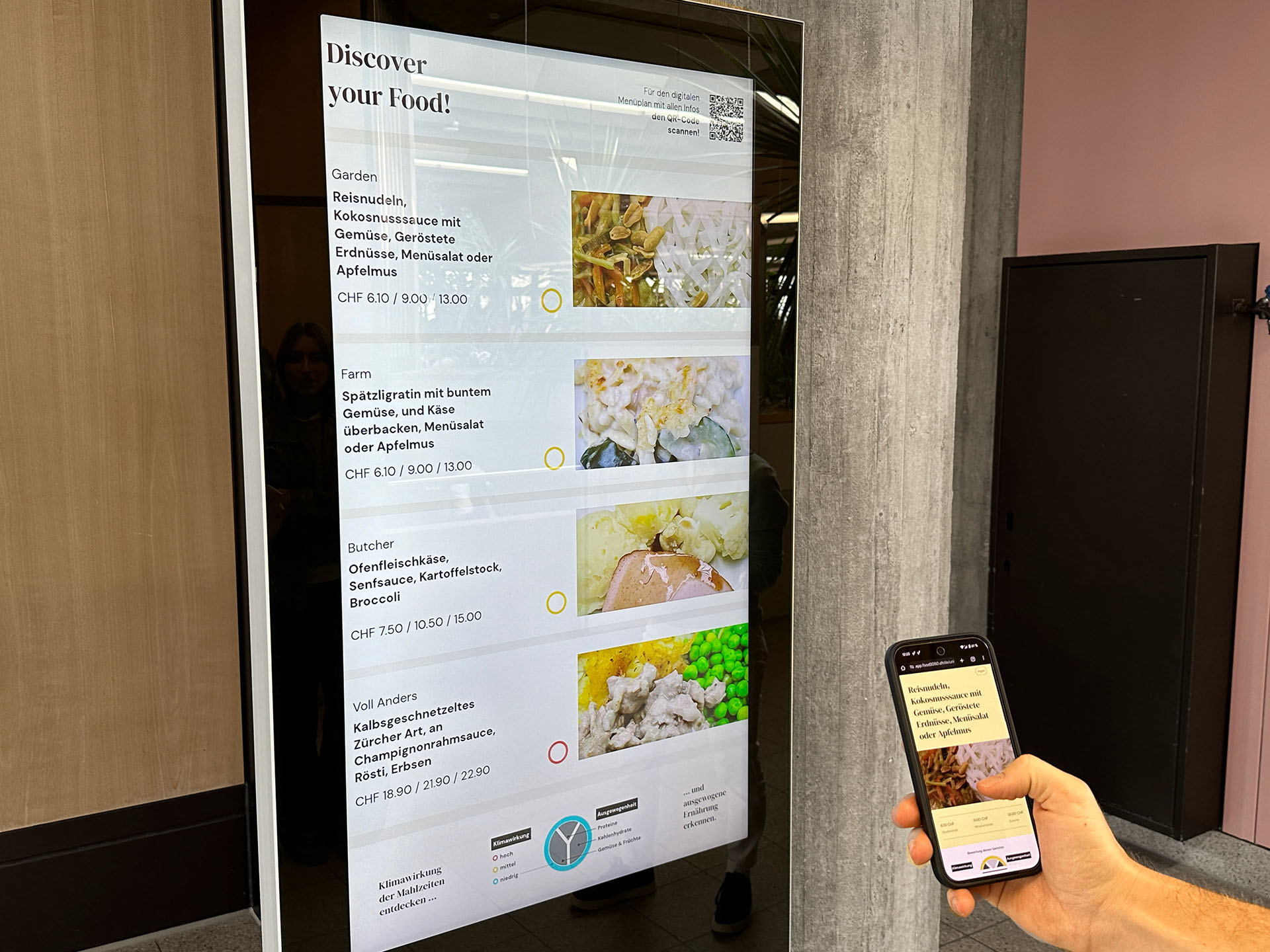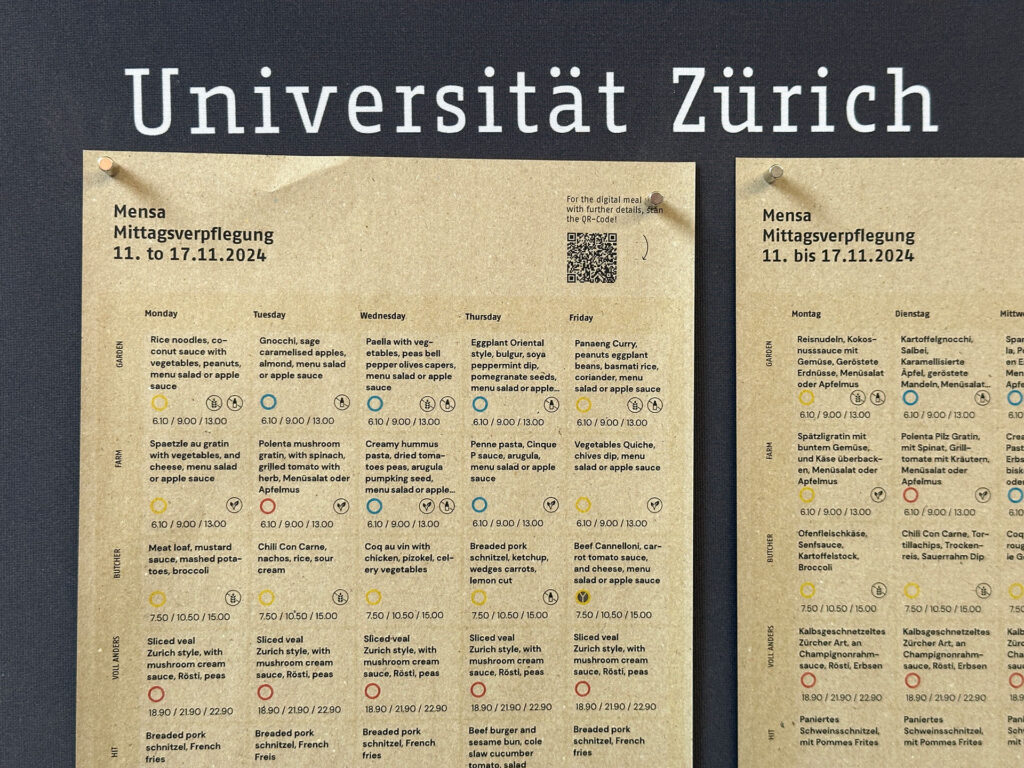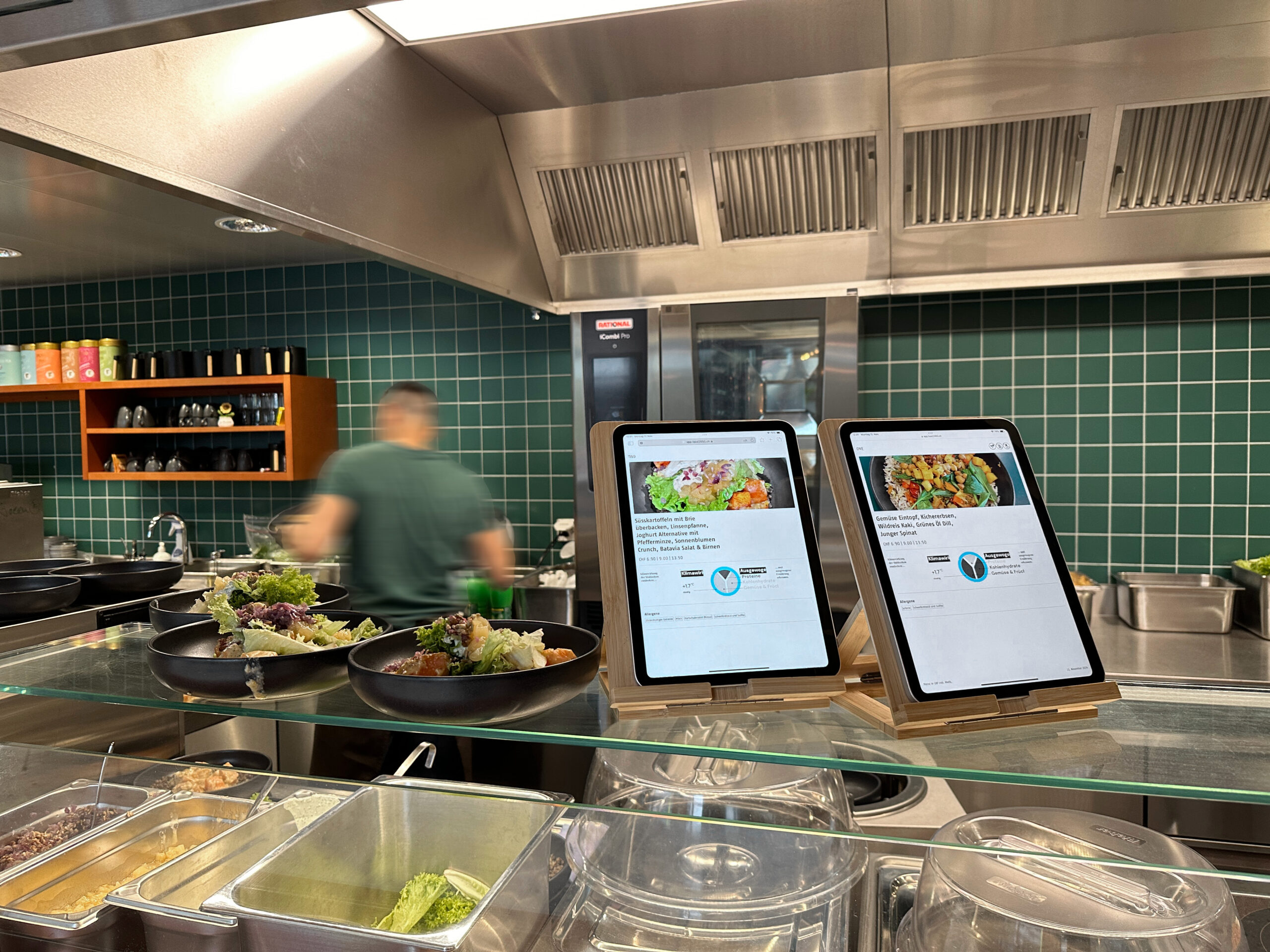Motivation instead of finger-pointing – how we encourage consumer decisions for sustainable products
How can I steer a consumer decision toward sustainability in just a few seconds? 🤔 By making it easy for consumers, managing the complexity for them, and thus empowering them to make their own, positively motivated decisions.
The FOOD2050 case is a strong example of how this can work and provides proof that it is truly scalable, reaches the broad mainstream, and creates real impact.
The FOOD2050 story
Watch the full film here! – Together with videographer and storyteller Christine Harbig and her film production company WYLD Motion, we traveled to Zurich to the University of Irchel, where the FOOD2050 nutrition guidance system we designed is in use in several cafeterias. There, we interviewed students and captured the gripping story of the two founders, Christian Kramer and Adrian Hagenbach.
The system is now running not only there, but also in 150 canteens of the partner ZFV Zurich Women’s Association throughout Switzerland. According to FOOD2050 CEO Christian Kramer, more than 10 million consumer decisions have already been influenced toward a climate-friendly nutrition.
The User Experience Design
As marketers and experience designers, it has always been our job to put ourselves in the user’s shoes and create a magic that draws them in. This is no different when it comes to sustainability, but it’s often a far greater challenge. FOOD2050 is a strong example here.
The UX and UI design of coool has achieved multiple prestigious awards and has undergone extensive refinement. In addition to the existing Climate Impact Model, a Health Impact Model has been introduced, designed and quantified in alignment with the standards of the Planetary Health Diet.
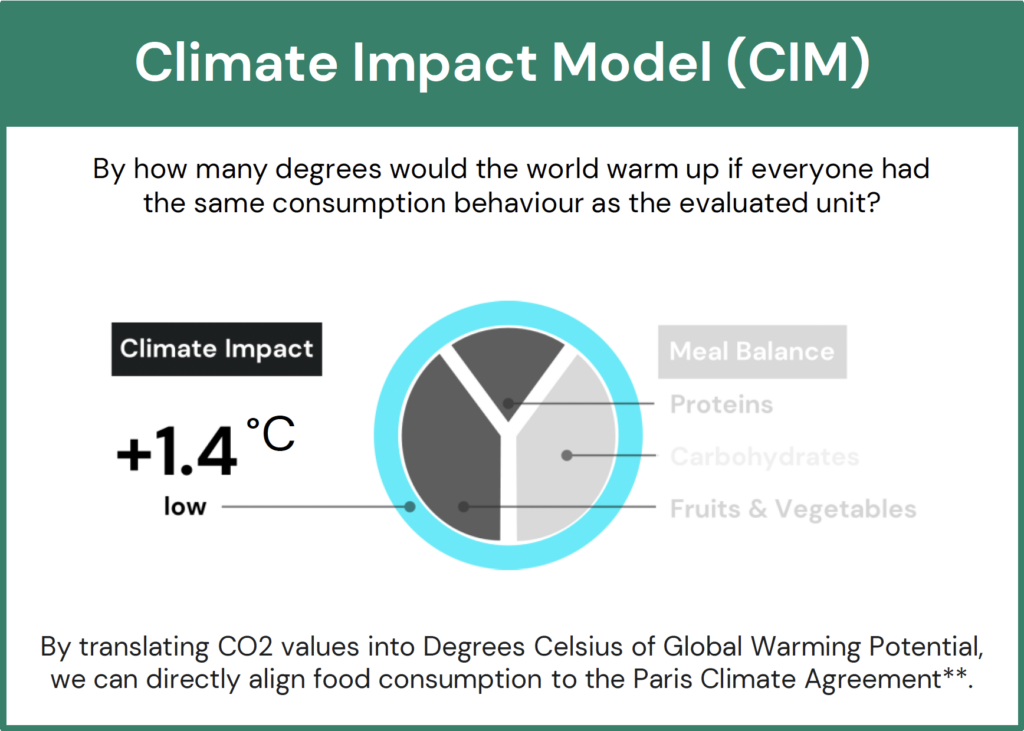
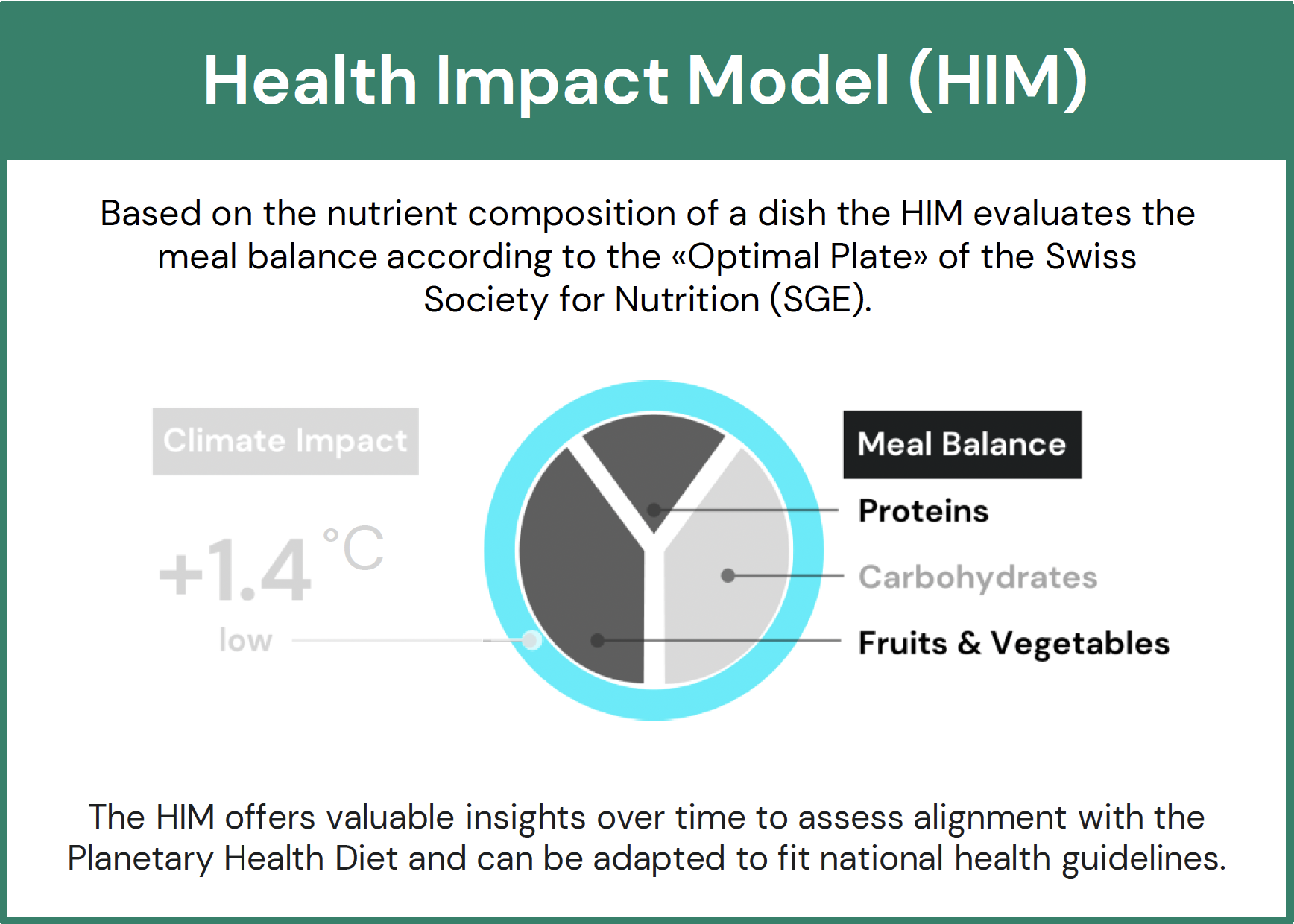
The guidance system was rolled out to all digital and haptic touchpoints.
